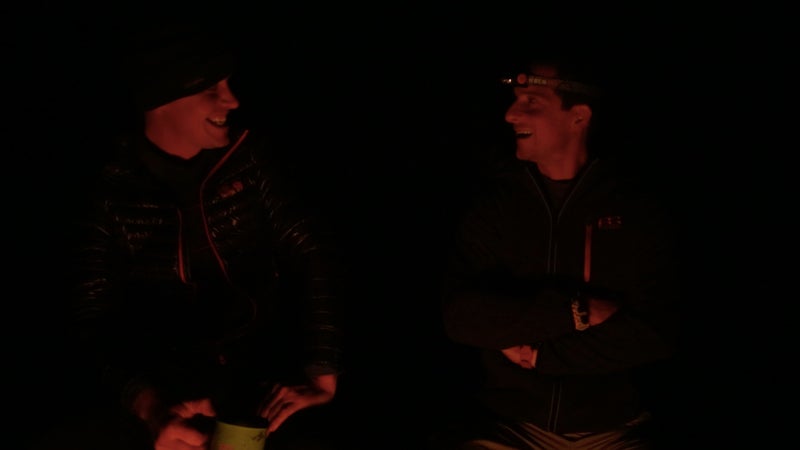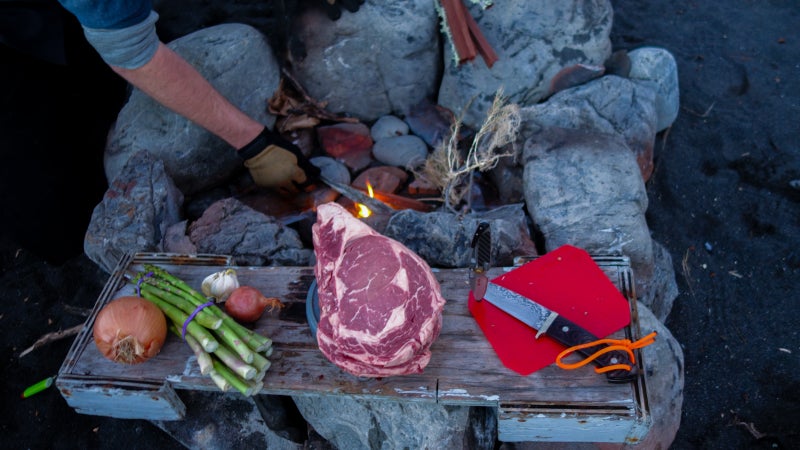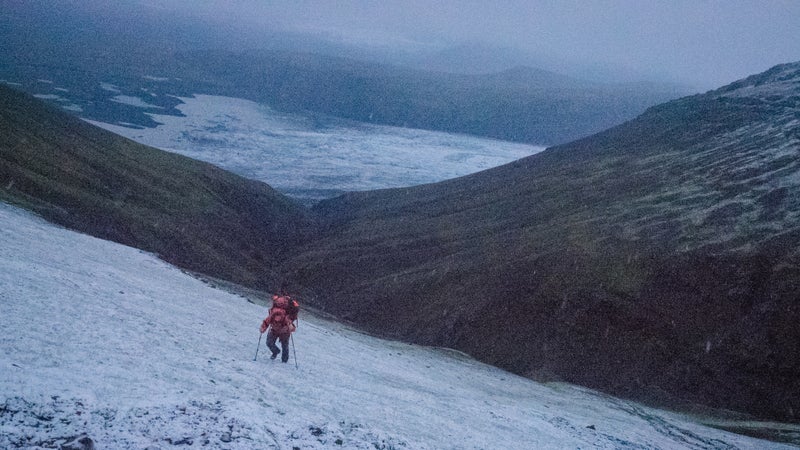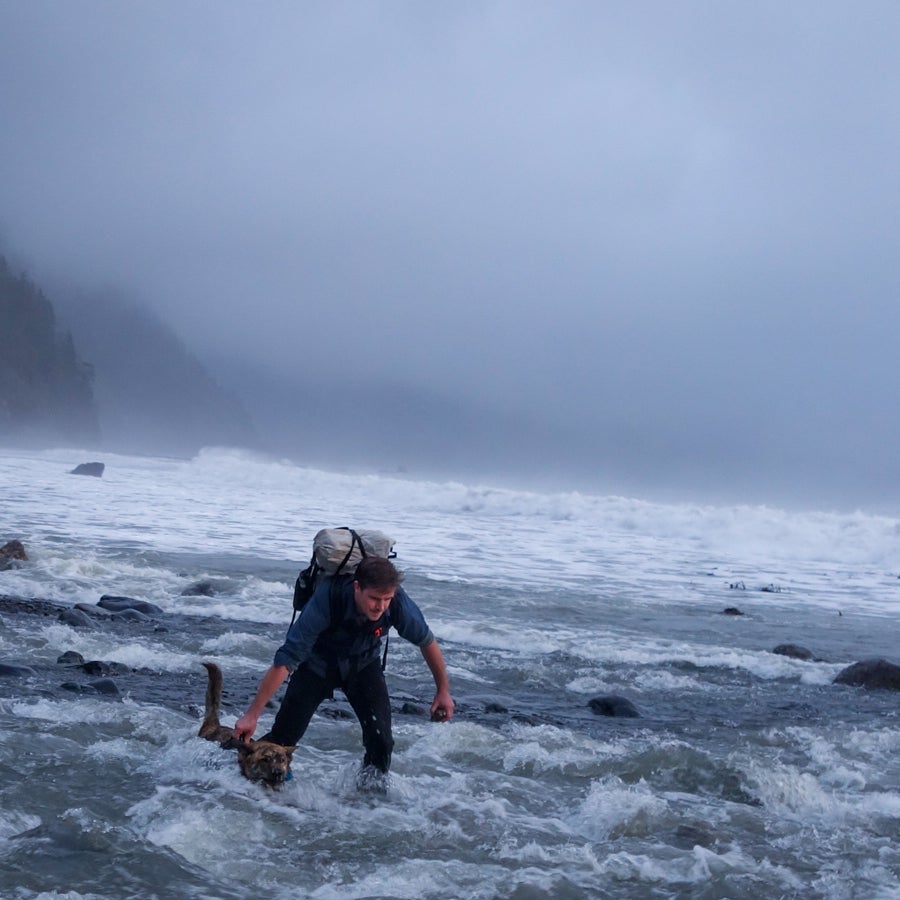Stop reading, watching, and clicking on so-called “survival” content. That word has, for too long, been used to market bad, impractical, largely useless advice to a public all too ready to fantasize about overcoming deadly challenges rather than simply learning how to enjoy the outdoors in more significant and effective ways. Labeling content with “survival” has become the outdoor media’s equivalent of slapping a busty, scantily clad chick on a product and selling it to an audience they're willingly condescending to.
From the Bear’s Mouth
Back in 2014, I had this exact discussion with Bear Grylls, while in New Mexico’s Gila National Forest. A couple of competent guys, very little survival was had that weekend, but we did enjoy climbing around on ropes, cooking a good meal over a fire, and sleeping outside under the stars.
The biggest purveyor of fictional, , faux survival media on the planet, I asked him how he felt about making a career out of giving people bad advice. “Yeah, it’s reckless,” he told me. “But for me, that’s what kept it fresh. I didn’t want to do eight seasons of ‘How To Build A Fire,’ the intention was to make something fun and dynamic about self rescue.”
“Really, textbook survival says stay still, don’t take any chances, wait for rescue,” he continued. “That’s a boring TV show. My thing was always: shoelace, dead squirrel, no other way down this rock face, you can do this! I’m not going to make a textbook survival show because it’s boring.”
So, if you’re not able to glean effective survival advice from Bear’s shows, or from his many imitators, then what value does he feel they bring? “The show isn’t about me running around, jumping off stuff, and flexing muscles,” he explained. “It’s about inspiring people. It’s about being able to take risks, and it’s about getting out there, and not being scared to make mistakes and go for things. Simple values like the wild rewards commitment.”
Bear’s happy that the tradeoff for painting an unrealistic picture about doing neat stuff outdoors is hopefully inspiring more people to get out there, and hopefully do so with more confidence. But I still think we can do better.

The Trouble with Survival
We should probably quantify exactly what is wrong with survival media. , but the brief summary is basically that it’s all predicated on unrealistic scenarios you’ll likely never face, and too often gets the basic priorities of survival—living—wrong. It also paints a picture of the so-called “skills” being taught that overstates their efficacy while understating their difficulty, and in so doing, tells people to do things that may be illegal or immoral. The biggest problem isn’t just that all these articles, shows, books, and products are giving you bad advice, it’s that they’re also creating an unrealistic expectation of the actual challenges you face outdoors, and the skills and tools you need to overcome them.
I like to use the example of fire-starting when talking about how unrealistic, and how misleading most survival crap is. The prototypical example of a “survival” solution would be to rub two sticks together, somehow magically conjuring fire from thin air. The various survival personalities all try to appear tougher than the next guy (often with ), and through that make you think something that’s actually really hard, and totally dependent on the quality of available materials and weather conditions, is something you’ll be able to emulate, and potentially stake your life on. In reality, starting a friction fire requires you to find totally dry wood, of perfect densities, then find a way to rapidly spin one piece, hold the other still, apply a lot of pressure from the top throughout the process, catch an ember in dry tinder of fine consistency, then bring that tinder bundle to your mouth, blow on it just right, get it into just the right kind of perfectly dry kindling, then nurture those first flames until you have a reliable fire. It’s not easy, it’s not quick, and it’s not something you can do in damp conditions or without the use of both arms and hands. A much better idea would simply be to carry a reliable means of processing wood, creating a spark, and starting a fire with you in a conveniently carried package, any time you’re outdoors. But . Starting to see the problem?
Shelter, water, fire, food. Those, in that order, are your survival priorities in the outdoors. But telling you to take adequate clothing, carry enough water, stick a lighter in your pocket, and maybe a couple Clif bars too, doesn’t generate the easy clicks that a story about an all-in-one flashlight/lighter/survival knife/multitool/pillow/jacket will. I’d argue that when it comes down to something as important as a potentially life-saving skill or product, publishers and TV networks are doing you a disservice by chasing those easy eyeballs. And it’s partially your fault of clicking on that stuff, or tuning in to watch the latest fictional survival scenario on cable television.

Don’t Survive, Live
Like a lot of us, I’ve been doing fun stuff outdoors my entire life. While, in that time, , been in some dicey situations, and rescued myself and other people, those experiences are vastly outnumbered by the times I’ve just been able to enjoy myself. And, in none of those handful of binds, have I ever found a .99 cent orange plastic whistle, or a mylar blanket, or any of the other crappy survival tchotchkes to be remotely useful, let alone necessary.
It’s been a while since I’ve hung out with Bear, and I’ve had a lot of bumps on the head since then, but one of the things he said that’s stuck with me went something along the lines of, “Survival is the art of persistence.” It’s not just a case of rubbing two sticks together, drinking your own pee, or dashing a snake’s head against a rock so you can eat it, surviving is something that happens to people who are tough, mentally and physically, and stick out some challenging, uncomfortable situations while keeping a clear head and making smart, common sense decisions.
That’s not to say that certain skills, or certain equipment, can’t be useful during one of those extremely rare survival situations. It’s to say that those skills, and that gear, should be much more realistic, and much more applicable to your daily life in the outdoors than all these silly shows, crappy products, and wrong-headed articles would have you believe. Knowing how to fashion a container for your pee out of a dead snake is less relevant than . Knowing how to build a shelter from branches and plastic bags is less important that knowing , no matter what you throw at it. Knowing how to kill a bunny by throwing a stick at it is less important than understanding .
And knowledge like that is the same knowledge that will empower you to enjoy going outside more, going outside in extreme weather, going further, and trying new activities. None of this is to say that knowing real, effectual, life-saving skills like first aid isn’t valuable. It’s to say: carry a freakin’ first aid kit, don’t rely on moss to disinfect your wounds.
Learning , that first aid kit, or , is how you become a more competent, more confident outdoorsperson, who’s capable of doing more exciting stuff, more safely. Then, if you do happen to get yourself in one of those rare life or death situations, it turns out that those are the same skills you’ll actually want to know to get out of them. And it’s those skills which you should be learning from outdoors media—the real stuff that will actually enable you to live better outdoors.

Let Survival Die
There’s no way for me for me to quantify the number of people who have lost opportunities to learn effective outdoors skills because they’ve instead spent their time studying bogus survival stuff. The best I can do is through anecdotal evidence.
While hosting my annual outdoors thanksgiving last year, I met a guy who proudly proceeded to spend most of an afternoon harvesting cattail fluff in order to make himself a pillow. Afterwards, he demonstrated more sweet skills by missing his target and throwing his tomahawk through my brand new Big Agnes tent. That pillow sure was crappy, it’s a good thing I packed duct tape, and while spending time reading about that stuff, this guy had ignored the basics of selecting camping gear for even moderate weather conditions. It got down to only about 20 degrees that night, but cattail-pillow-tomahawk dude and his girlfriend just about froze to death. Had they instead read my article on , they would probably have had a much better time.
So, while yes, I am calling on you to stop being easily conned by the survival content ruse, I’m also hopefully going to be able to help you learn the stuff that’ll actually enable you to be a better, more informed, outdoorsperson. That’s something I’ve already written about extensively (before IndefinitelyWild joined ���ϳԹ���), but I guess what I’m saying is that we’ll bringing that content over here now, too. We’re going to teach you how to live, not just survive, outside, on a weekly basis. What would you like to read about first?


